On-board weighing systems provide significant benefits to waste companies, and given today’s high cost of time and equipment, installing a scale system can have a dramatic impact on the profitability of operating vehicles.
Byron Mucke
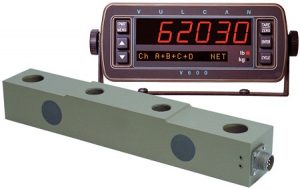
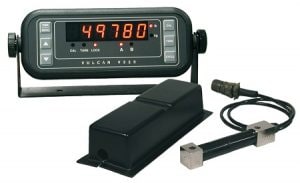
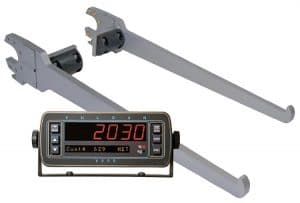
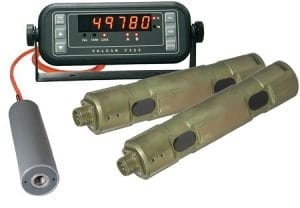
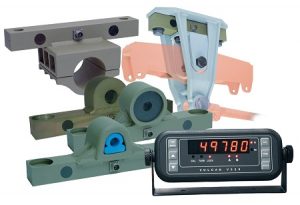
Given the rising cost of operating waste collection vehicles, it is becoming more important to evaluate the use of on-board weighing systems to reduce operating costs, meet new safety standards and improve fleet efficiency.
Electronic on-board scales are not new. They were introduced more than 30 years ago into trucking applications where monitoring gross vehicle or payload weight was necessary, but where platform scales were not readily available.
Over the years, improvements were made to these early electronic on-board scales. Load cells were improved and specialty load cells were developed for fifth wheel applications. Center hanger solutions were created for 4-spring applications, single point load cells for single point suspensions and other solutions for most other spring suspensions. Strain gage based air sensors were added for an increasing number of air ride suspensions, and deflection suspension transducers for certain types of spring suspensions. Hydraulic sensors were designed for vehicles equipped with hydraulic lift cylinders. Today, on-board scales can be installed on most trucks or trailers with air, spring or mixed suspensions (see On-Board Scale Configurations).
Key Benefits
Based on this product evolution, the applications for on-board scales are rapidly expanding and are found in almost every trucking industry. Organizations using on-board scales are reaping benefits far beyond just monitoring gross vehicle weight to avoid overweight fines. Given the high cost of time and equipment, on-board scales are having a dramatic impact on the efficiency and profitability of operating a vehicle or fleet. Following are some key benefits that on-board scales offer.
Vehicle Efficiency
Optimize residential and commercial vehicle efficiency by hauling the maximum legal payload on every trip to the landfill or transfer station without going to a platform scale. Searching for and using a platform to determine payload involves an additional step that diminishes efficiency. The fee to obtain a weight from a platform itself involves a cost of approximately $9.00 per trip, but that is the least of the additional expenses incurred. The driver time to travel to the scale, use the scale, and return is an expense incurred at the driver’s hourly compensation rate. In addition, the additional mileage traveled is an expense incurred at the operating cost of the vehicle. Knowing and then maximizing payload weight while loading helps avoid these added costs.
Eliminate Overweight Fines
Eliminating overweight fines typically is a secondary benefit to the many benefits of operating more efficiently. Paying less in fines saves money that could otherwise go to the bottom line. Fines often compound as the amount over the legal limit increases, and many public entities continue to seek alternate streams of revenue so the trend to fine for overweight loads is likely to continue. In addition, in some jurisdictions overweight fines escalate to misdemeanors as the amount over the legal limit exceeds affecting both drivers and their employer.
Transfer Trailer Load Weight
Load transfer trailers to the maximum legal weight quickly at the loading point, without waiting in scale lines or driving to the nearest platform scale. You will never have to off-load and then re-load to get it right. Waiting in line to load costs in operator time at hourly compensation rates, vehicle operating costs and unnecessary fuel costs. When a drive is unable to know or maximize a load the first time, the result is often either being overloaded or underloaded. In either case, this can result in a second or third trip to either add more or remove more weight. By loading to a maximum legal weight the first time, these operator vehicle and fuel costs are incurred once instead of multiple times. An added benefit is to reduce the potential that an operator will decide to go ahead and proceed when overloaded to avoid a second or third trip rather than removing the overload. Or that an operator will proceed underloaded thereby under-using the capacity instead of adding more load.
Costs and Vehicle Life
Reduce maintenance costs and increase vehicle life by hauling loads that the vehicle was designed to carry. Many maintenance managers claim that on-board scales pay for themselves with reduced engine, brake and structural maintenance costs. Vehicles and related equipment are specified for a certain capacity. Any load less than capacity does not fully use the capital equipment or the operator’s capacity, and creates unnecessary fuel consumption via an inefficient trip and the need for more trips to haul the same payload. One example in a related industry was a fleet that was encouraged to not overload such that the average payload over time was 70 percent of capacity. By implementing on-board scales, approaching maximum payload at the point of loading allowed the same amount of product to be hauled by 20 to 30 percent less vehicles resulting in lower operating, maintenance and capital equipment costs, and less liability exposure. Another potential benefit involves equipment warranty. Vehicles with specified payload capacities typically carry warranty with a time limit and subject to operating a vehicle within specified limits, so consistently loading and operating a vehicle to but not above the legal limit helps simplify warranty claims and discussions.
Safety and Liability
Increase safety and eliminate liability exposure by keeping weight within legal limits allowing braking distance to remain constant and tracking around corners to be more predictable. Braking distance increases with weight. If a vehicle is overloaded, the braking distance required increases. Cornering also degrades when a vehicle is overweight—another safety concern. If an accident occurs involving an overload vehicle, that is an element that is considered fault and damages.
Driver Retention
Increase driver retention by assuring a safe load and no exposure to overweight fines. Providing drivers with tools to perform their job efficiently and safely is one key element to obtaining and retaining the best operators. Additionally, providing an on-board weighing system that allows them to maximize payload without overloading reduces exposure to overweight fines, and even misdemeanors in some jurisdictions.
Operation Efficiency
Improve operation efficiency by recording weights, load cycles, dump cycles and route/service times. Knowing your loaded truck weight is a critical component to the overall efficiency of your fleet. This information allows you to make decisions regarding your routes, billing and maintenance. With the increasing use of on-board computers, wireless communications and GPS equipment, weight information can be collected and transmitted real time back to the home office, so decisions can be made on the fly or records kept monitoring the capacity and efficiency of the operation over an extended time period.
Trends
When waste operations consider the benefits obtained from on-board scales, they typically calculate their payback to be from three to 12 months. This will shorten in the future as the cost to haul without on-board scales continues to increase due to the following industry trends:
- Increasing competition and the need to improve efficiency and reduce costs
- Increasing enforcement of overweight regulations
- Increasing need to reduce liability exposure
- Increasing difficulty finding and retaining competent drivers
- Increasing demand for more information
A Dramatic Impact
On-board weighing systems provide significant benefits to waste companies, and given today’s high cost of time and equipment, installing a scale system can have a dramatic impact on the profitability of operating vehicles. However, it is important to talk to a knowledgeable supplier with a wide range of products and experience installing and supporting on-board scales. There are many types of scale technologies and it is critical to invest in a system that meets the vehicles specific requirements and your company’s long-term goals.
Byron Mucke is the Marketing liaison for Vulcan On-Board Scales (Kent, WA). Byron has been with Vulcan On-Board Scales since 1994. He can be reached at (800) 237-0022 or visit www.vulcanscales.com.
Sidebar
On-Board Scale Configurations
Body scales, suspension scales, front fork scales and shear pin load cells used on roll-off scales directly measure the load and are proven to be the most accurate and reliable over an extended period of time. They work by being installed on the vehicle in configurations to directly measure the load.
Body Scales—Body scales are installed between the body and frame of rear loaders, side loaders or front loaders to provide optimal performance. In these applications the body weight is transferred directly through the load cells allowing the strain gauges to measure a voltage change that relates to changing loads.
Fork Scales—Fork scales are another solution for a front loader where the principle is essentially the same. As the front forks pick up a container, the weight is transferred through the fork itself. In this application, strain gauges installed in the front fork load cells measure a voltage change indicating bin weight that the operator can monitor, record and use for decision-making.
Suspension Scales—Suspension scales of all types exist to provide the full benefits of a load cell scale system. These are most often applied in transfer station environments using fifth wheel load cells on transfer tractors or yard tractors to measure weight directly. For transfer trailers a variety of load cell solutions exist such as center hanger suspension scales, single point load cells and Chalmers suspension scales. All of these spring solutions use direct load measurement and can be mixed and matched.
Roll-Off Scales—Roll-off scales are another way to scale roll-offs using shear pin load cells, and are the most common method to obtain optimal performance. In this specific application load cell shear pins are installed in the rear hinge assembly to measure the rear of the container. The weight of the front of the container is often obtained by measuring the hoist cylinder pressure with a hydraulic pressure sensor, or sometimes by installing load cells or shear pins under the hoist assembly depending on configuration and application requirements.
Secondary Measurement Devices—Secondary measurement devices such as deflection transducers measure the deflection of a part of the vehicle such as a suspension member or axle. They are mounted on suspension equalizing beams, rear end housings, or axles of the vehicle and measure the deflection of the axle or suspension under load to correlate to the weight.
Secondary Pressure Sensors—Secondary pressure sensors such as air sensors measure changes in air bag pressure to correlate to weight. Mixed air and spring scale solutions are often the best fit for a variety of application requirements depending on configurations, cost and user objectives.
